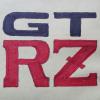Search the Community
Showing results for tags 'Chassis Rigidity Torsion'.
-
TLDR at the end of the post. Having done some torsional rigidity testing in the past, was curious where exactly the S30 comes in as far as torsional rigidity. Am also doing some things to attempt to improve the rigidity so want a way to test what is really happening. Also wanted to confirm a theory, that any strut brace that has any sort of kink or bend in it is not doing anything except bling and adding weight. 1.5" x .120" wall square steel tube jigs. The rear is solidly anchored to the concrete, bolted to the mustache bar and diff mount brackets, two studs and four bolts, and this tube frame bolted to the concrete with two 1/2" anchor studs. Rear totally immobilized and confirmed by dial gauge. The front has the same square tube configured to simulate the front suspension, bolted to the upper strut mounts and the lower arm inner pivots. Designed to introduce the loads into the chassis as close as possible to the existing suspension. This square tube jig is bolted to a 14' long 2"x4"x.120" beam which pivots at chassis center with a dial gauge to measure deflection. Now add weight to the end of the beam and measure with the dial gauge. Here is where I departed from the norm. Usually the end of the beam is loaded with weights. Sand buckets, barbells, dead batteries etc. But this is problematic for precise measurements and tedious and labor intensive lifting weight on and off. So I positioned a single chassis scale at the end of the beam, bolted a 4x4 beam vertically coming down from the rafters and positioned a hyd bottle jack on top of the scale pushing up against the 4x4. Everything precisely placed and measured for repeatable accuracy. At this point the chassis (1975) is bare, stripped, and sandblasted. All rust fixed to stock configuration. The first test is bone stock to establish a baseline. All tests are carefully set up and repeated three times to ensure accuracy. The dial gauge is positioned 12" from the pivot point. So a 12" (torsion) radius circle works out to a linear .2095" per degree (rounded to .210"). The load point (beam to front jig) is 24" from the pivot, and the pivot to beam force point (scale) is 128" so a 5.33 ratio on the weight. On the first test going to 1/2 degree since I was concerned about permanently distorting the chassis. .5 deg (.105") deflection @ 200 lbs. x 5.33, ----- .5 deg @ 1066 lbs. 2nd test in the stock configuration going to the full 1 degree, the chassis took a small amount of permanent set, only .010" and it easily tweaked back to zero. 1.0 deg (.210") deflection @ 368 lbs. x 5.33, ---- 1.0 deg @ 1962 lbs. So the S30 comes in a little on the soft side in stock configuration. Compare to a Dodge Viper a 6,000 lbs per 1.0 deg, a '65 GT40 Ford at 12,000 lbs. per 1.0 deg. A typical F-1 or Indy car at 25,000 lbs. per 1.0 deg. Then the chassis was fully seam welded. $50 of shield gas and a $40 reel of Mig wire. Four days labor. This is per some threads here on HybridZ advocating welding the seams to improve rigidity. This is also a general thought when any unibody car is concerned. Torsional rigidity test after full seam welding. 1.0 deg (.210") deflection @ 337 lbs. x 5.33, ---- 1.0 deg @ 1796 lbs. A LOSS of 8 percent rigidity. Thankfully this is a test mule car (The 2nd car is still sitting in the yard) as there is no going back on welding the seams. So the "weld the seams for rigidity" on a '75 Z info is TOTAL MYTH. Analyzing what happened, if you look closely at all the spot welds and try to surmise/ analyze them from an engineering standpoint they are at least adequate. There's no place on the chassis where they seem to be too far apart. Had a feeling from the start that seam welding wouldn't do all that much. But why did the chassis lose strength? Again just a theory but spot welds introduce very low heat and presumably Japanese steel is either hardened or a harder alloy than plain mild steel. Mig welding however, especially when you are trying to burn through galvanizing and seam sealer is much hotter. The HAZ reduced (annealed?) the strength of the steel, hence the lower numbers. Further testing will be with an eight point roll cage with different diagonal configurations and with strut top braces. Believe that torsional and beaming rigidity is just like aerodynamics. The chassis has to be treated on an overall basis. Just adding things here and there without looking at the overall picture is not going to necessarily gain much. One add on that is very popular is the strut brace. Most of these are not doing anything. The forces are so high and the movement distance you are trying to hold rigid is so small that any brace with any kind of kink, bend, or section change is not going to do anything. This will be tested to give proven results. TLDR version 1975 280z Torsional Rigidity Test Stock bare chassis----- 1962 lbs. per 1 degree Stock bare chassis, fully seam welded----- 1796 lbs. per 1 degree Don't bother welding your chassis seams on a '75 Z, it's a lot of trouble and expense and it only makes rigidity worse. Further testing will be with an 8 point roll cage and strut tower braces.

